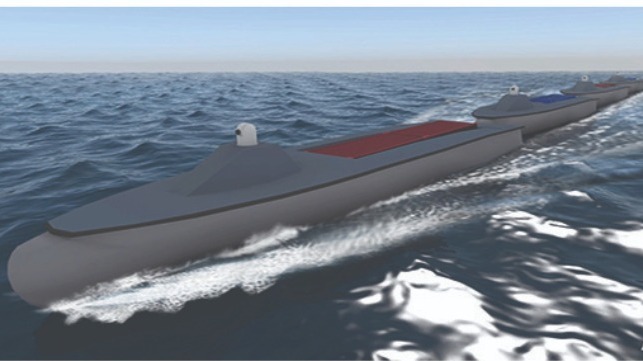DARPA Moves Ahead With Futuristic "Sea Train" Convoy System

The Defense Advanced Research Projects Agency (DARPA) is moving ahead with a futuristic proposal for convoying naval vessels bow-to-stern to achieve greater fuel efficiency and range in long-distance transits.
DARPA has a particular purpose in mind - a purpose that dovetails with the Department of Defense's growing interest in unmanned surface warfare. Its "Sea Train" program is intended to demonstrate long range deployment capabilities for a fleet of tactical unmanned surface vessels. The objective is to make use of "wave-making resistance reductions" to overcome the range limitations of "medium unmanned surface vessels" on transoceanic transits without refueling.
The U.S. Navy's Medium Unmanned Surface Vessel program, or MUSV, is one of the service's two planned procurement efforts for full-scale unmanned surface combatants. Defense naval architecture firm Gibbs & Cox and defense contractor L3Harris hold the contract for MUSV, and if all options are exercised, it could be worth a total of $280 million for nine delivered units.
This week, DARPA awarded Gibbs & Cox a separate $9.5 million contract to develop a "Connectorless Sea Train" concept. The winning design proposal, which Gibbs & Cox has dubbed the Articulated Resistance Minimized Autonomous Deployment Asset (ARMADA), will rely upon robotic controls, autonomy, and hydrodynamic optimization to achieve the convoy capability.
Gibbs & Cox is also one of several firms competing on an initial design for the development of the Navy's future Large Unmanned Surface Vessel (LUSV).
